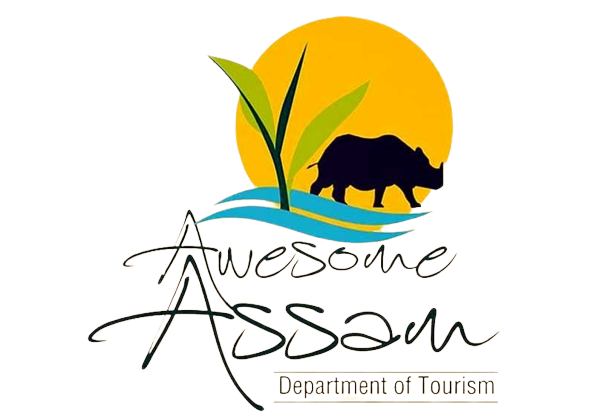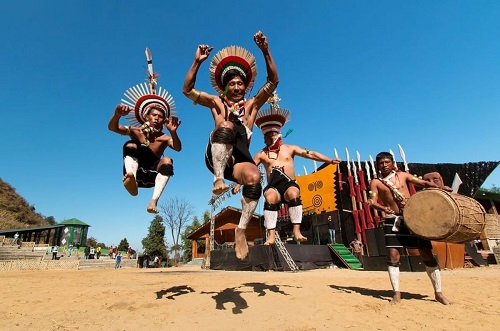
Nagaland Tourism
Nagaland, also known as the “the Kingdom of Celebrations,” provides visitors with opportunities to see scenic highlands, colourful indigenous cultures, and significant ancient sites. This guide will cover the most popular tourist locations in Nagaland, providing a glimpse into the region’s variety of cultures and splendour of nature.
Discover Nagaland Tourism: Best Tours and Tourist Attractions
Dimapur: The Commercial Hub with Historical Significance
Dimapur, Nagaland’s largest city, is known as the gateway to the state. It has a fascinating mix of modern infrastructure and historical landmarks. The city is rich in archaeological ruins dating back to the mediaeval Kachari Kingdom, making it an interesting destination for history enthusiasts.
Key Attractions:
- Kachari Ruins: Ancient stone monoliths that are remnants of the Kachari civilization.
- Rangapahar Reserve Forest: A beautiful wildlife sanctuary perfect for bird-watching and nature lovers.
- Diezephe Craft Village: Famous for its handloom and handicraft products, offering a glimpse into Naga craftsmanship.
Kohima: The Capital City with a Rich History
Kohima, the capital of Nagaland, is a city steeped in history and offers a perfect blend of scenic beauty and historical significance. It is known for its role in World War II during the famous Battle of Kohima, and for the annual Hornbill Festival, which showcases the vibrant culture of the Naga tribes. Kohima is surrounded by lush hills and offers several trekking opportunities for adventure lovers.
Key Attractions:
- Kohima War Cemetery: A memorial dedicated to the soldiers who lost their lives during the Battle of Kohima.
- Hornbill Festival: A grand celebration of Naga culture is held every December.
- Dzükou Valley: A stunning valley known for its trekking trails and vibrant seasonal flowers.
- Japfu Peak: Ideal for trekking, offering panoramic views of the valley.
Dzukou Valley: The Serene Paradise of Northeast India
Discover Dzukou Valley, a hidden gem on the border of Nagaland and Manipur, renowned for its lush landscapes, rare flora, and tranquil ambiance. Ideal for trekkers and nature lovers seeking peace in the hills.
Key Attractions:
- Dzukou Lily Blooms: A rare flower unique to the valley, blanketing the landscape in beauty.
- Breathtaking Landscapes: Rolling hills and verdant green meadows offer picturesque views at every turn.
- Serene Trekking Trails: Trails that wind through lush valleys and misty forests, perfect for adventurers.
Mon: The Land of the Konyak Tribe
Mon is one of the most culturally rich districts of Nagaland and is home to the Konyak Tribe, known for their distinct facial tattoos and warrior traditions. Mon is a great destination for travellers looking to explore tribal life and culture up close. The town offers scenic views of rolling hills and traditional Naga villages.
Key Attractions:
- Longwa Village: One of the most fascinating villages in Nagaland, located on the Indo-Myanmar border. The village chief’s house lies half in India and half in Myanmar.
- Aoling Festival: Celebrated by the Konyak tribe, marking the beginning of the spring season.
- Shangnyu Village: Famous for the ancient wooden carvings in the village’s chief house, showcasing the tribe’s unique craftsmanship.
Mokokchung: Cultural Hub of the Ao Tribe
Mokokchung is known as the cultural and intellectual hub of Nagaland and is home to the Ao Tribe, one of the state’s most prominent tribes. It’s a vibrant town with lively markets, traditional festivals, and a rich cultural heritage. Mokokchung is also known for its beautiful hill stations and serene landscapes.
Key Attractions:
- Ungma Village: One of the oldest villages of the Ao Tribe, providing an immersive cultural experience.
- Longkhum Village: Known for its scenic beauty and ancient cultural significance, it’s a great spot for nature lovers and trekkers.
- Tsüngremong Festival: A popular harvest festival celebrated by the Ao Tribe every August.
Wokha: Land of the Lotha Tribe and Orchards
Wokha is a serene town known for its beautiful hills, fruit orchards, and the vibrant culture of the Lotha Tribe. It’s a must-visit destination for those looking to explore offbeat places in Nagaland. Wokha is also home to the scenic Mount Tiyi, which is shrouded in local myths and offers stunning views.
Key Attractions:
- Mount Tiyi: A popular trekking destination known for its natural beauty and panoramic views.
- Doyang Lake: Famous for its serene environment and as a stopover for migratory Amur falcons.
- Tokhu Emong Festival: A post-harvest festival celebrated by the Lotha Tribe.
Phek: A Hidden Gem for Nature and Adventure Lovers
Phek, an offbeat destination in Nagaland, is ideal for travellers seeking natural beauty and adventure. The town is surrounded by green hills, waterfalls, and lakes, making it perfect for trekking, bird-watching, and eco-tourism. Phek is also home to the Chakhesang Tribe, known for their craftsmanship and cultural heritage.
Key Attractions:
- Shilloi Lake: A beautiful, heart-shaped lake surrounded by hills, offering a tranquil escape.
- Dzudu Lake: A picturesque lake popular for trekking and camping.
- Khezakenoma Village: One of the oldest villages of the Chakhesang Tribe, known for its historical significance.
Tuophema: A Model Village Showcasing Naga Culture
Tuophema is a model village and a community-based tourism initiative, designed to give travellers an authentic experience of Naga culture. Located close to Kohima, it’s a popular spot for cultural tourism where visitors can experience Naga traditions, food, and festivals firsthand.
Key Attractions:
- Traditional Naga Huts: Experience traditional Naga living by staying in community-run huts.
- Tuophema Tourist Village: A village dedicated to preserving Naga customs and promoting sustainable tourism.
- Naga Cuisine: Enjoy authentic Naga food and interact with the locals to learn about their traditions.
Achievements and Recognitions




Hornbill Festival: The Biggest festival of Nagaland
The Hornbill Festival, held annually in Nagaland, is one of the most vibrant and culturally significant festivals in India. Often referred to as the “Festival of Festivals,” it celebrates the rich heritage of the Naga tribes and showcases their traditions, art, and culture. Here’s an overview of this spectacular event:Kohima:
When: The Hornbill Festival takes place in the first week of December, typically lasting from December 1 to December 10.
Where: The festival is held at the Naga Heritage Village in Kisama, about 12 kilometres from the state capital, Kohima.
Highlights
Cultural Performances: The festival features a series of cultural performances, including traditional dances, music, and storytelling. Various Naga tribes participate, showcasing their unique customs and heritage.
Traditional Cuisine: Visitors have the opportunity to sample a wide array of traditional Naga dishes, including smoked meat, bamboo shoot preparations, and local rice beer. Food stalls serve delicious ethnic delicacies, making it a gastronomic delight.
Art and Craft Exhibitions: The Hornbill Festival is a platform for local artisans to display and sell their handicrafts, including handwoven textiles, jewellery, pottery, and bamboo crafts. It highlights the intricate craftsmanship of the Naga tribes.
Naga Sports: Traditional sports and games are an integral part of the festival, including wrestling, archery, and various indigenous games, reflecting the warrior culture of the Naga tribes.
The Hornbill Symbol: The festival is named after the hornbill bird, which holds cultural significance for the Naga tribes and is considered a symbol of the land’s rich biodiversity.
Engagement: The festival fosters community spirit, bringing together various tribes from across Nagaland. It promotes unity, understanding, and appreciation of the diverse Naga cultures.
Importance
The Hornbill Festival serves as a significant platform for cultural exchange and tourism in Nagaland. It attracts thousands of visitors, both domestic and international, and helps promote the rich heritage and traditions of the Naga tribes. The festival also plays a vital role in preserving traditional practices and fostering a sense of pride among the local communities.
The Hornbill Festival is not just a celebration; it is a vibrant display of Nagaland’s cultural richness and diversity. For travellers seeking an authentic experience of tribal culture, this festival offers a unique opportunity to immerse oneself in the traditions, customs, and spirit of the Naga people. Whether through dance, music, food, or art, the Hornbill Festival leaves an indelible mark on all who attend.
Address List
- Sixmile, Panjabari, Guwahati
- +91 94355 15011
- +91 86386 04075
- query.naturehunt@gmail.com

Happiness is traveling

